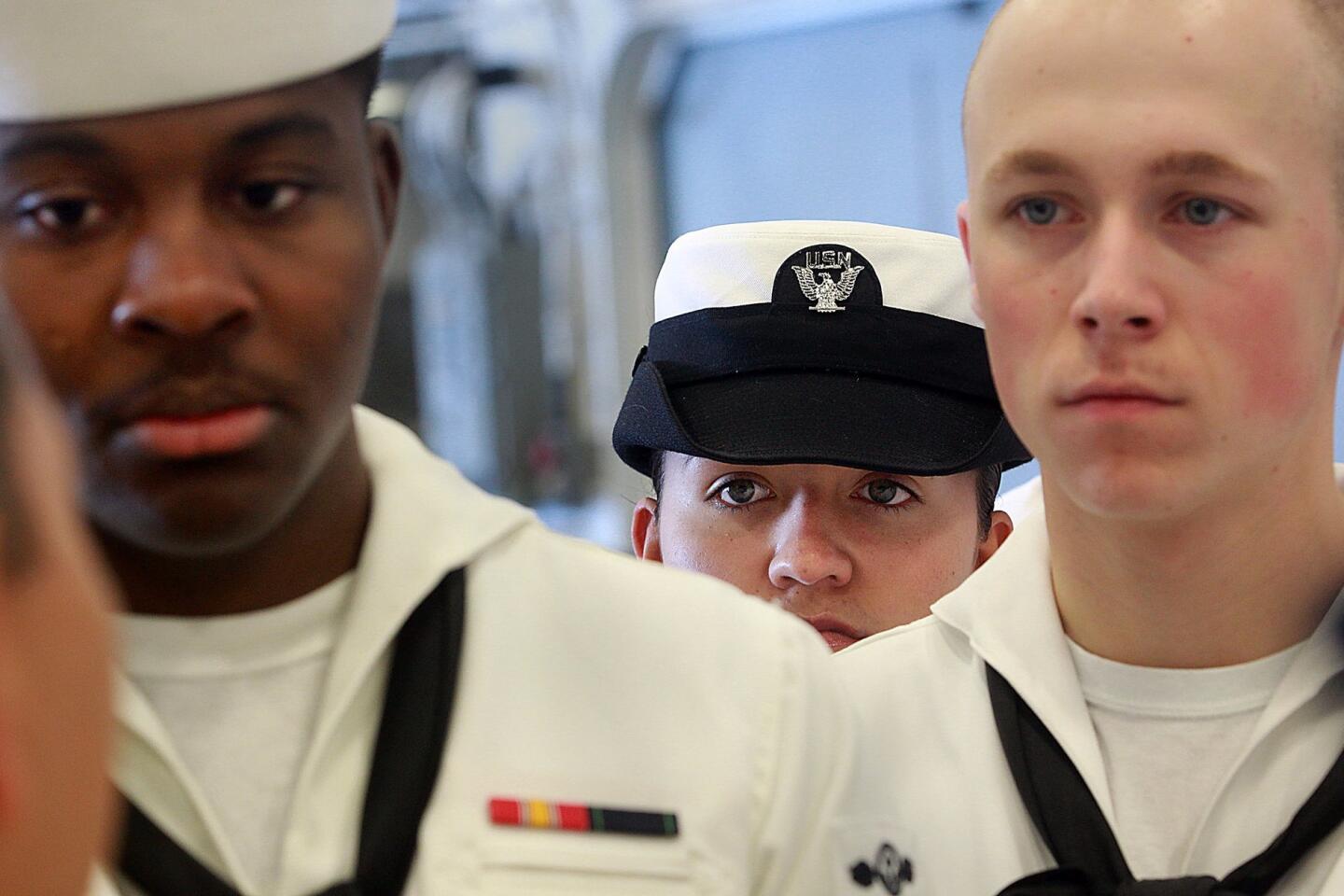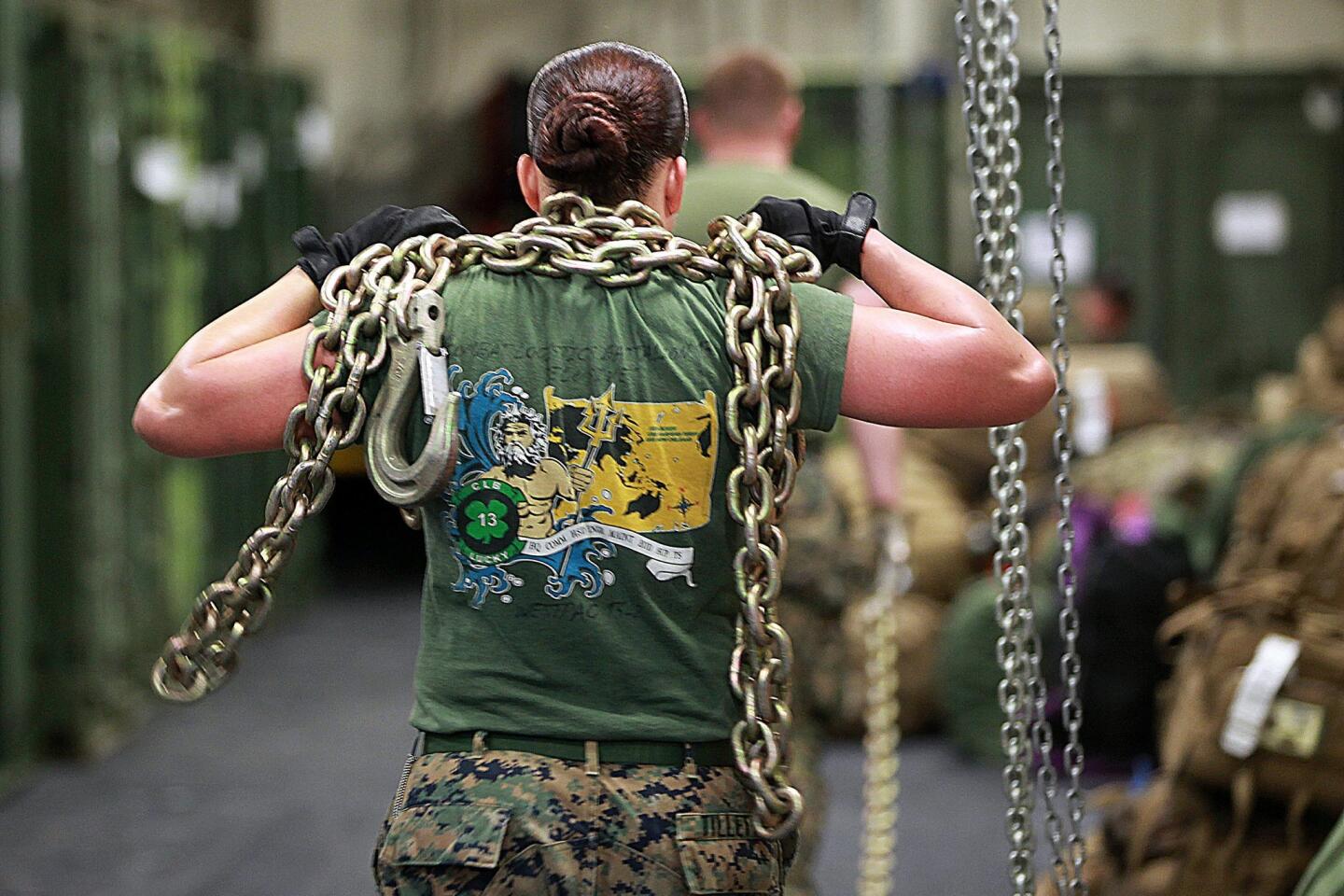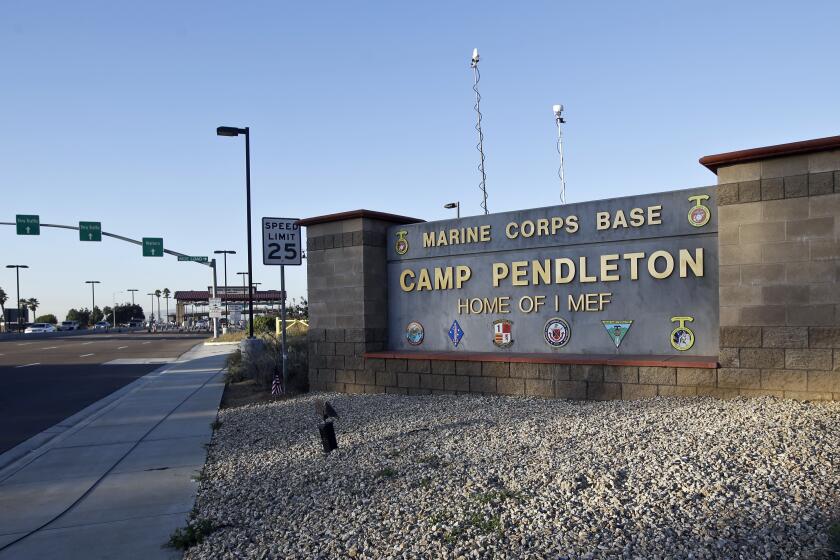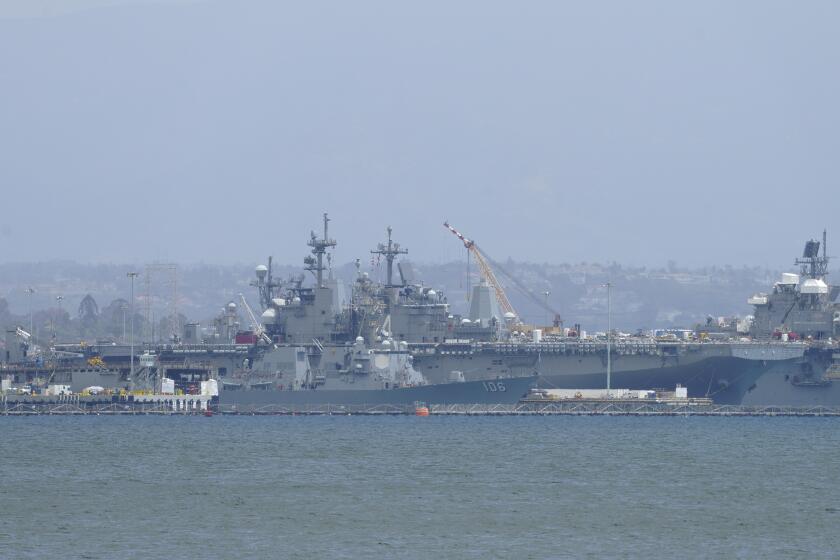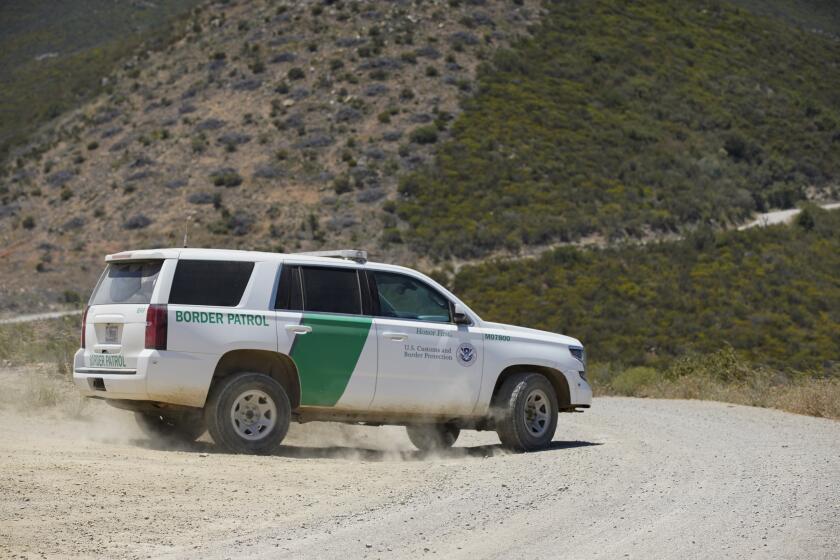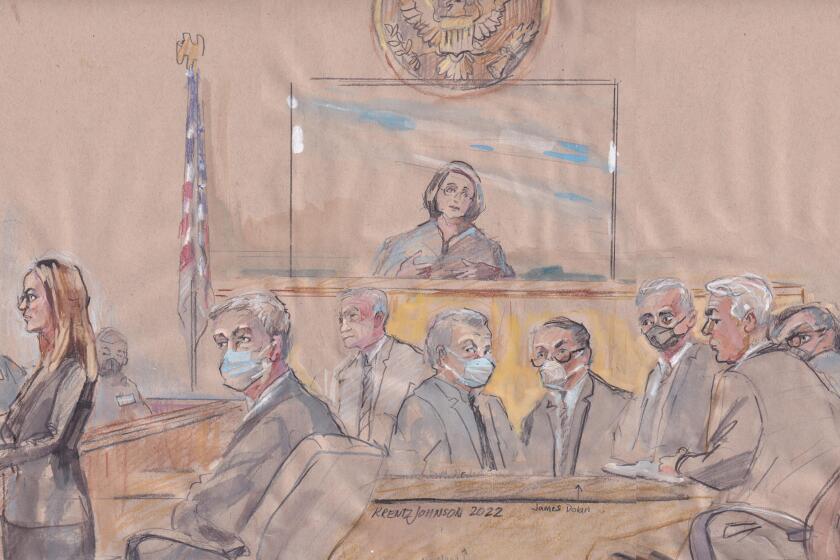Navy’s America: New ship for new aircraft
A new Navy warship noteworthy for several reasons – chief among them its iconic name, America – arrived in its home port of San Diego on Monday.
In addition to its special moniker, the America is a modern first – a U.S. amphibious assault ship with a big flight deck but no “well deck.”
That means the ship cannot launch the kind of landing craft that Marines use to storm beaches.
Instead, it is focused solely on aviation and uses most of its hulking interior space to accommodate the Marine Corps’ larger new aircraft, the MV-22
Osprey and the vertical landing F-35 Joint Strike Fighter.
The America left its Mississippi shipyard in July and sailed around the tip of South America on its way to San Diego for the first time.
Next up, the ship will be commissioned Oct. 11 during Fleet Week in San Francisco.
Why the departure from Marine Corps tradition? Throughout history, Marines are famous for storming beaches in small landing craft launched from amphibious ships.
Now Marines will fly in by helicopter, if they come from the America or its identical sister ship, the Tripoli, now under construction.
Traditional Marine beach-storming amphibious crafts -- such as the air-cushioned landing craft, or LCAC -- can carry dozens of troops and heavy vehicles, such as tanks.
But while an Osprey holds just two dozen Marines at a time, it can carry them to fights far from the water’s edge, such as in Afghanistan, Marine Corps experts said.
“What it can do is put a lot of Marines ashore at an expanded distance at a high rate of speed, which is really (what matters) when you look at the majority of missions that Marines are given,” said Lt. Col. G. D. Hasseltine, commanding officer of the Marine contingent that traveled aboard the America.
Also, the America will travel with two smaller escort ships, as is typical in Marine expeditionary units. Those ships will still carry landing craft for beach storming and carrying tanks, officials say.
Two future big-deck amphibious ships will test out a hybrid concept.
They will have large open space in the ship’s belly to support today’s larger Marine aircraft.
But they will also have some kind of small “well deck,” which is what the Navy calls the space at the back of a boat that opens and floods with water to allow landing craft to slip out.
The issue is the size and complexity of the Marine Corps version of the Joint Strike Fighter and the tilt-rotor Osprey.
The vertical-landing Joint Strike Fighter replaces the Marines’ AV-8B Harrier jump jet, which is significantly smaller.
The Osprey -- whose wings tilt to allow it to land like a helicopter but fly like an airplane -- replaces the smaller CH-46 Sea Knight troop-carrying helicopter.
The America has two super-sized maintenance bays to accommodate the new aircraft. They are 25 feet high instead of a typical 18- or 19-foot version on earlier amphibious assault ship classes.
Three of the other flattop amphibious ships in San Diego – the Makin Island, Essex and Boxer – are Wasp-class ships, most of which were designed and built in the late 1980s and 1990s. The other big San Diego amphib is the aging Peleliu, last of the Tarawa class.
“The real estate is much larger. A third-again larger,” said Navy Senior Chief Ken Price, the America’s avionics armament division officer.
It means they can lower an Osprey into the maintenance bays to do work, instead of trying to do it on the flight deck – which is open to the weather.
It matters because a ship built to launch aircraft is only as good as its ability to repair them.
“We’re optimized to be able to operate all 32 aircraft for an extended period of time, which is different from other ships,” said Capt. Chris Mills, America’s “air boss.”
“We can go a lot longer on station. We can continuously generate a higher level of (aircraft) sorties and sustain continuous flight operations at a high tempo,” Mills said.
The America is expected to take its maiden deployment in 2016. That’s after a year of testing and evaluation as a new concept ship.
The new amphibious ship is the fourth to bear the name America.
The first was a racing schooner built in 1851. It first served the Confederate Navy in 1861 then was scuttled and raised again by the Union Navy to apprehend blockade runners.
On Monday, as America sailed into San Diego Bay for the first time, the racing ship America – a replica of that early schooner – met the warship and escorted it into the harbor.
The second America was a German passenger liner seized during World War I. The U.S. Navy used it to carry troops to and from Europe.
The third was a Kitty Hawk-class aircraft carrier launched in 1964.
The importance of the ship’s name is not lost on the crew.
Throughout the morning, the ship’s intercom system blasted songs such as Ray Charles’ “America the Beautiful.”
The skipper, Capt. Robert Hall, said the crew intends to choose patriotic slogans from U.S. military history for the ship’s common areas.
Get Essential San Diego, weekday mornings
Get top headlines from the Union-Tribune in your inbox weekday mornings, including top news, local, sports, business, entertainment and opinion.
You may occasionally receive promotional content from the San Diego Union-Tribune.
